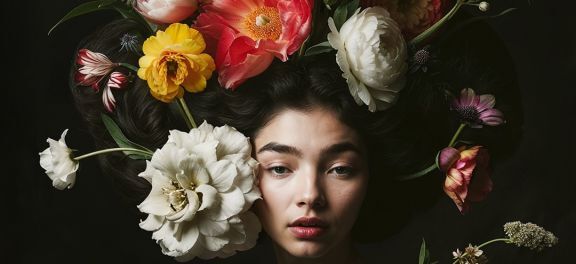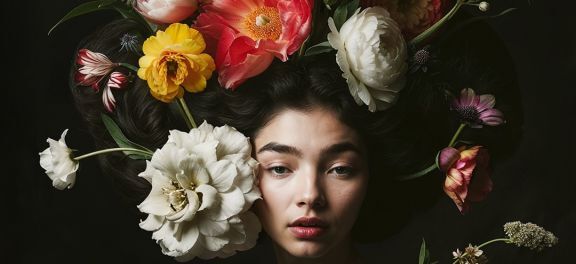
For centuries, flowers have brought colour, fragrance and context to Paleis Het Loo. Bloom is about 17th-century still lifes and Princess Mary’s influence on the use of flowers. Contemporary artists, designers and the palace’s team of gardeners bring this history to life. Though they admire the historical artworks, they also have critical questions. How did these flowers come to be here? Who paid the price for all this wealth and beauty? And what is the future of flowers? There’s a story behind every flower and every work of art. Bloom opens 20th of April and runs through to 1st of September 2024.
Tulip Mania
In the 17th century striped tulips were especially popular. Mary also loved these tulips and used them in the gardens and rooms of Paleis Het Loo. What started as a love of tulips grew into an obsession. Dutch traders paid a fortune for a single tulip bulb. The exhibition will include a special loan: Pieter Cos's tulip book from 1637, in gouache on paper, from the Artist Special Collections of Wageningen University. In the same space, Jos Agasi has used Pieter Cos's tulip book as one of the many references in his installation.
The plant collection of Willem and Mary
One unique exhibit - returning to the Netherlands for the first time – will be the watercolour collection of Stephanus Cosijns, 1685-1688 from the collection of Bibliotheca Nazionale Centrale de Firenze, Italy. This book played an important role in laying the foundations of botany in the Netherlands. It depicts a part of the world-famous plant collection once owned by politician Gaspar Fagel, who was a close friend of Willem and Mary. They inherited the plants and the 97 watercolours after Fagel’s death. Thanks to these images, we still know today which plants grew in the gardens of Paleis Het Loo.
Contemporary artists
Flower artist Hanneke Frankema has created a floral artwork using dried flowers from the gardens and flower room of Paleis Het Loo. These flowers have been dried since September 2023 with the help of volunteers from Paleis Het Loo, in the attic of the palace.
Mirjam Verschoor, known as "tribecalledtrash," creates floral artworks with a reference to sustainability. She photographs street litter and digitally adds it to an image, replacing flowers with waste in her still lifes, as a warning of how our throwaway society damages nature.
The exhibition will also feature a number of couture pieces by fashion designer Claes Iversen. This renowned designer is known for his creations in the fashion world and his commissions for the royal family. Iversen is fascinated by old techniques, such as embroidery, and puts his own spin on the techniques in his creations. These pieces complement the final part of the exhibition, which explores various contemporary forms of flower-based leisure activities, such as experiencing natural scents.
Paleis Het Loo collaborated with Noëlle van Dijk, a multidisciplinary artist & experimental designer, on the campaign image. Just as in 17th-century artworks, Noëlle brings together images and edits that are not possible in reality.
Flowers in the Palace
The rooms of the palace are still supplied with fresh bouquets weekly, assembled by its own craftsmen, partly with flowers from the Paleis Het Loo nursery garden. Paleis Het Loo is the only museum in the Netherlands with a professional flower room. Like the museum, the flower room celebrates its fortieth anniversary this year.
